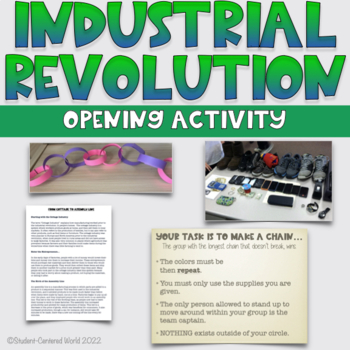Introduction to the Industrial Revolution Activity - Assembly Line Simulation
- Zip
What educators are saying
Description
This introduction activity for the Industrial Revolution uses a simulation to take students from the Cottage Industry through the Assembly Line.
Students will be broken into groups that are of different sizes. Each group will be given an envelope with supplies: 2 different colors of paper, scissors, and glue sticks, but will be uneven. They will then need to make the longest, sturdiest chain using the supplies they are given and nothing else. There will then be an element where they can get supplies they need from an entrepreneur and then finally, a system that mimics an assembly line.
Once completed, there is a reading that breaks down each of the systems simulated and what it meant for the industrial period.
You may also be interested in: Assembly Line Reading Comprehension - Industrial Revolution
**PLEASE NOTE** This product comes as a ZipFile. Be certain you can open this type of attachment before purchasing.
I would greatly appreciate your feedback!
Any questions? Please let me know as soon as possible in the product Q/A so I can help.


